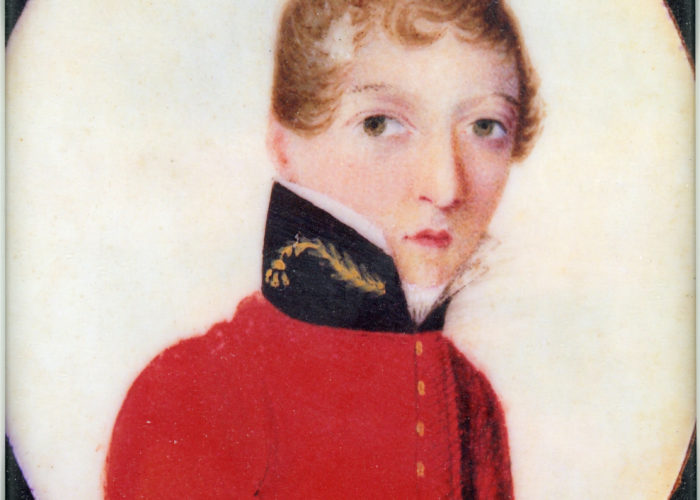Portrait of James Barry
Theme: Medicine, science and the people, Economic and technological revolution
Born Margaret Bulkley, James Barry lived most of his life as a man, qualifying as a doctor and becoming an accomplished and respected military surgeon. His identity as a woman was only revealed when his maid laid him out after his death. It is not known whether Barry identified as a man or whether he simply kept up a disguise in order to have a medical career, at a time when women were denied this opportunity.
James Barry (1785-1865) was born Margaret Ann Bulkley in Cork, Ireland. When the family became impoverished, a plan was hatched, known only to people close to her, to gain Margaret a place at Edinburgh University to study medicine. Since this was not a career option open to women, Margaret submitted her application as James Barry. At first, Edinburgh University resisted Barry’s application. His height, high pitched voice, and gentle features led them to believe he was too young. However, a friend and patron, the Earl of Buchan, persuaded the University to allow him to take the entrance exam. He was accepted, and qualified as a medical doctor in 1812.
Barry moved to London to attend courses in surgery, midwifery, and anatomy. He became a member of the Royal College of Surgeons of London in the summer of 1813 and launched his career as a military surgeon. He practiced in military hospitals in Britain and around the world. In Cape Town, he successfully treated the Governor’s daughter, becoming a favourite physician both to the Governor and his family. Barry also performed a rare and successful caesarian section, in which both mother and baby survived. He eventually achieved the senior rank of Inspector General of Hospitals, in 1858.
Barry helped to bring about significant improvements in army sanitation and hygiene. He fought tirelessly for better treatment of the poor, the sick, prisoners, and slaves. Yet, he also gained a reputation as a bad-tempered eccentric and was teased for his ‘squeaky voice’ — although teasing died down after Barry killed one detractor by shooting him in the lung during a duel! Many suspected and some actually discovered that Barry had been assigned female at birth. While we cannot be certain of Barry’s true gender identity, we do know that his sex was not publicly revealed during his lifetime.
After his death from dysentery in 1865, when his body was being laid out for burial by his maid, Barry’s female anatomical features were discovered, but kept secret until after the funeral. The news spread, causing a scandal. The army shut down access to his papers for nearly one-hundred years, until they were unearthed by historian Isobel Rae in the 1950s.
Did you know?
Elizabeth Garrett Anderson was the first woman to qualify in Medicine in Britain, in 1865.
Use our Classroom resources to investigate this object and the theme of Medicine further.
Highlights:
- Using objects, artworks and other sources to find out about the past
- What factors drove change in medical practice during the Age of Revolution?
- Was change in medical practice evolutionary or revolutionary during the Age of Revolution?
And much more…
Sources & acknowledgements
This object description and its related educational resources were researched and written by our team of historians and education specialists. For further information see the item’s home museum, gallery or archive, listed above.
-
Did you know..?
Elizabeth Garrett Anderson was the first woman to qualify in Medicine in Britain, in 1865.
-
Education overview
You can access a range of teachers resources related to this object and more on our education page.
Please also see our glossary of terms for more detailed explanations of the terms used.
-
Curatorial info
- Originating Museum: Private collection
- Production Date: c. 1813-16
- Size: 1 x 1.5 inches
-
Use this image
You can download this image for personal and educational use but please take note of the license type and rights holder information.
- Rights Holder: Image by kind courtesy of Michael Du Preez.
- License Type: All Rights Reserved



